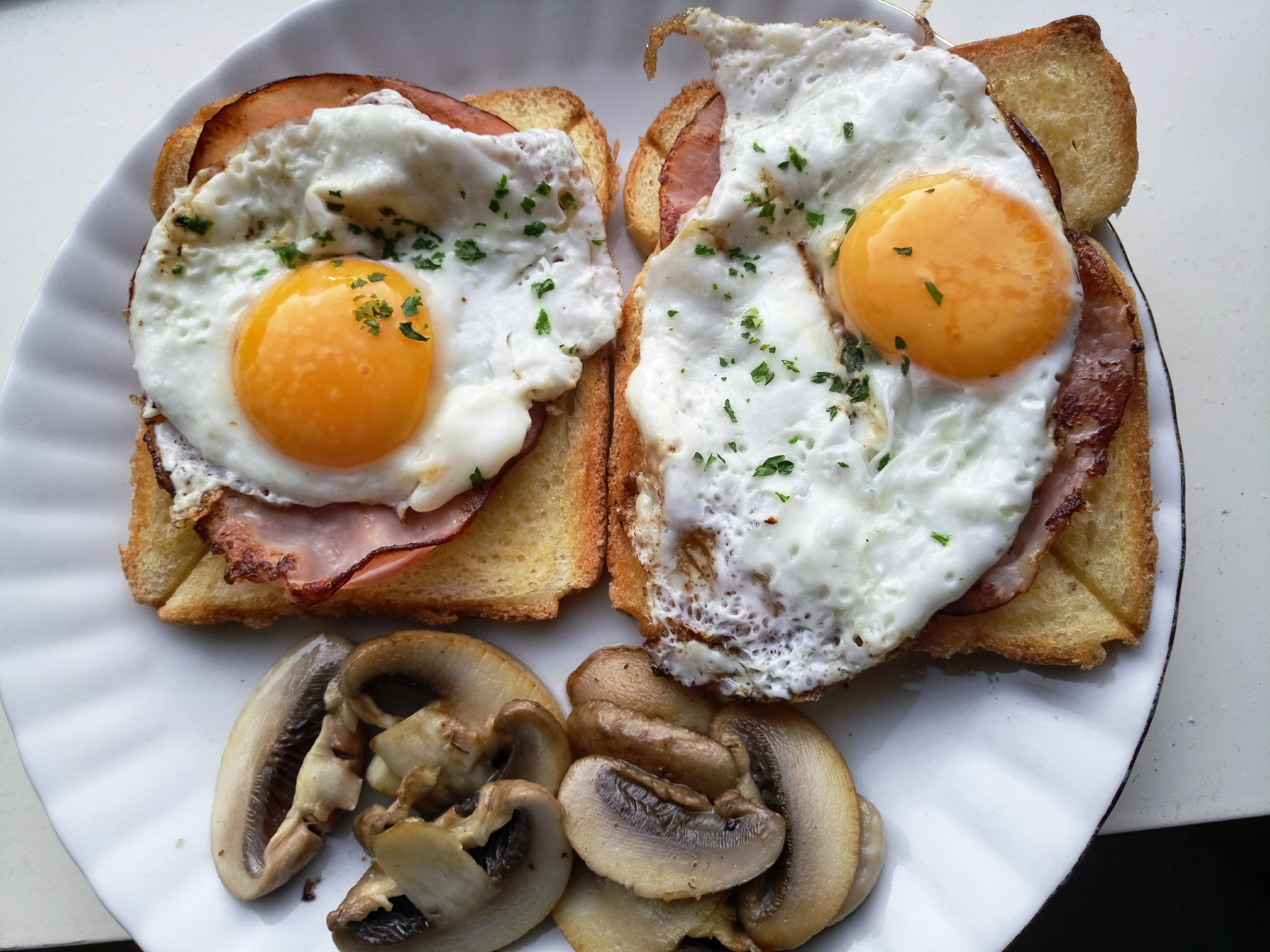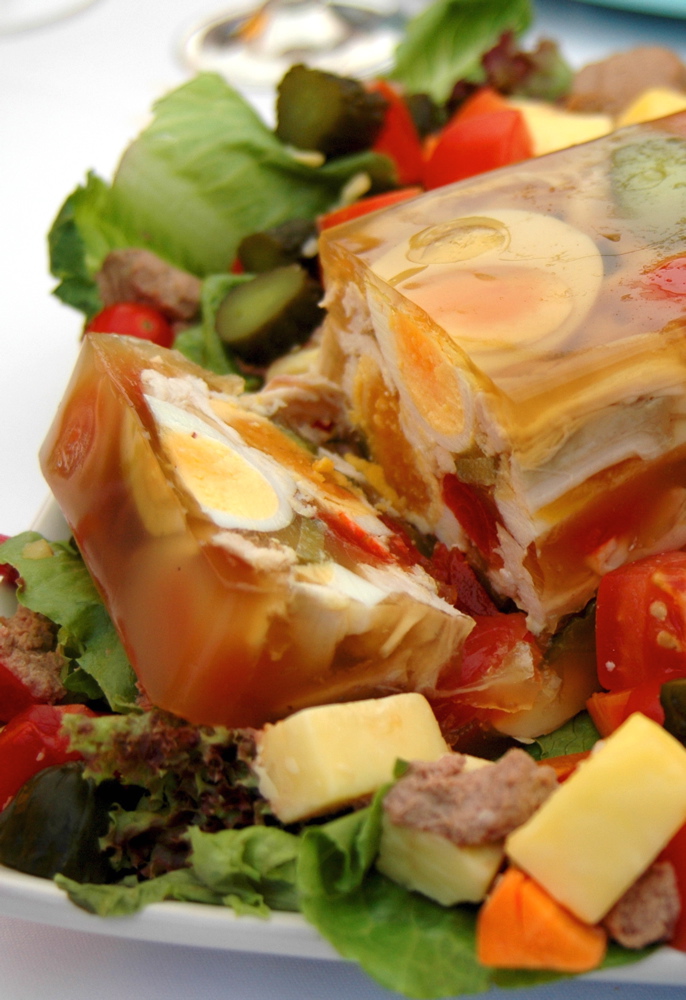|
Dyrlægens Natmad
Dyrlægens natmad ("veterinarian's night food") is the Danish name for a ''smørrebrød'', also known as an open-faced sandwich, made with a particular selection of toppings. The name of this snack originated in the 1920s in Oskar Davidsen's sandwich bread restaurant in Copenhagen. According to food historian Nina Bauer the famous sandwich is named after one of the restaurant's regulars, a distinguished veterinarian named Sigurd Kejlgaard, who was employed to look after the horses in the royal stables and the contemporary Circus Miehe. The simplest form of ''Dyrlægens natmad'' consists of a slice of ''rugbrød'' with a base spread of butter or fat, a layer of '' leverpostej'', sliced salt beef, meat stock aspic and red onion rings on top.Opslag dyrlægens natmad i Fakstorp, Jørgen; Boyhus, Else-Marie, (red.) (1998), Gastronomisk Leksikon, Nordisk Forlag, . See also *Danish cuisine Danish cuisine ( da, det danske køkken) originated from the peasant population's own ... [...More Info...] [...Related Items...] OR: [Wikipedia] [Google] [Baidu] |
Denmark
) , song = ( en, "King Christian stood by the lofty mast") , song_type = National and royal anthem , image_map = EU-Denmark.svg , map_caption = , subdivision_type = Sovereign state , subdivision_name = Kingdom of Denmark , established_title = Consolidation , established_date = 8th century , established_title2 = Christianization , established_date2 = 965 , established_title3 = , established_date3 = 5 June 1849 , established_title4 = Faroese home rule , established_date4 = 24 March 1948 , established_title5 = EEC accession , established_date5 = 1 January 1973 , established_title6 = Greenlandic home rule , established_date6 = 1 May 1979 , official_languages = Danish , languages_type = Regional languages , languages_sub = yes , languages = GermanGerman is recognised as a protected minority language in the South Jutland area of Denmark. , demonym = , capital = Copenhagen , largest_city = capital , coordinates = , ethnic_groups = , ethnic_g ... [...More Info...] [...Related Items...] OR: [Wikipedia] [Google] [Baidu] |
Sandwich
A sandwich is a food typically consisting of vegetables, sliced cheese or meat, placed on or between slices of bread, or more generally any dish wherein bread serves as a container or wrapper for another food type. The sandwich began as a portable, convenient finger food in the Western world, though over time it has become prevalent worldwide. In the 21st century there has been considerable debate over the precise definition of ''sandwich''; and specifically whether a hot dog or open sandwich can be categorized as such. In the United States, the Department of Agriculture and the Food and Drug Administration are the responsible agencies. The USDA uses the definition, "at least 35% cooked meat and no more than 50% bread" for closed sandwiches, and "at least 50% cooked meat" for open sandwiches. In Britain, the British Sandwich Association defines a sandwich as "any form of bread with a filling, generally assembled cold", a definition which includes wraps and bagels, but excl ... [...More Info...] [...Related Items...] OR: [Wikipedia] [Google] [Baidu] |
Smørrebrød
(; originally , "butter and bread") smørbrød "butter bread" (Norwegian language, Norwegian), is a traditional open-faced sandwich in the cuisine of Denmark, cuisines of Denmark, Cuisine of Norway, Norway and Cuisine of Sweden, Sweden that usually consists of a piece of buttered rye bread (, a dense, dark brown bread), topped with commercial or homemade cold cuts, pieces of meat or fish, cheese or Spread (food), spreads, and garnishes. Bread Bread is a very important part of the Scandinavian diet, primarily , which is sourdough rye bread. It is a dark, heavy bread which is often bought sliced, in varieties from light-coloured rye to very dark, and from refined to whole-grain.. Some toppings are served on ('French bread'), a very light, crusty wheat bread. The bread is usually buttered, though for some variants, a spread of lard is customary. Toppings Traditional toppings include pickled herrings (plain, spiced or curried), slightly sweeter than Dutch or German herrings; thi ... [...More Info...] [...Related Items...] OR: [Wikipedia] [Google] [Baidu] |
Meat
Meat is animal flesh that is eaten as food. Humans have hunted, farmed, and scavenged animals for meat since prehistoric times. The establishment of settlements in the Neolithic Revolution allowed the domestication of animals such as chickens, sheep, rabbits, pigs, and cattle. This eventually led to their use in meat production on an industrial scale in slaughterhouses. Meat is mainly composed of water, protein, and fat. It is edible raw but is normally eaten after it has been cooked and seasoned or processed in a variety of ways. Unprocessed meat will spoil or rot within hours or days as a result of infection with, and decomposition by, bacteria and fungi. Meat is important to the food industry, economies, and cultures around the world. There are nonetheless people who choose to not eat meat (vegetarians) or any animal products (vegans), for reasons such as taste preferences, ethics, environmental concerns, health concerns or religious dietary rules. Terminology Th ... [...More Info...] [...Related Items...] OR: [Wikipedia] [Google] [Baidu] |
Danish Language
Danish (; , ) is a North Germanic language spoken by about six million people, principally in and around Denmark. Communities of Danish speakers are also found in Greenland, the Faroe Islands, and the northern German region of Southern Schleswig, where it has minority language status. Minor Danish-speaking communities are also found in Norway, Sweden, the United States, Canada, Brazil, and Argentina. Along with the other North Germanic languages, Danish is a descendant of Old Norse, the common language of the Germanic peoples who lived in Scandinavia during the Viking Era. Danish, together with Swedish, derives from the ''East Norse'' dialect group, while the Middle Norwegian language (before the influence of Danish) and Norwegian Bokmål are classified as ''West Norse'' along with Faroese and Icelandic. A more recent classification based on mutual intelligibility separates modern spoken Danish, Norwegian, and Swedish as "mainland (or ''continental'') Scandinavian", wh ... [...More Info...] [...Related Items...] OR: [Wikipedia] [Google] [Baidu] |
Smørrebrød
(; originally , "butter and bread") smørbrød "butter bread" (Norwegian language, Norwegian), is a traditional open-faced sandwich in the cuisine of Denmark, cuisines of Denmark, Cuisine of Norway, Norway and Cuisine of Sweden, Sweden that usually consists of a piece of buttered rye bread (, a dense, dark brown bread), topped with commercial or homemade cold cuts, pieces of meat or fish, cheese or Spread (food), spreads, and garnishes. Bread Bread is a very important part of the Scandinavian diet, primarily , which is sourdough rye bread. It is a dark, heavy bread which is often bought sliced, in varieties from light-coloured rye to very dark, and from refined to whole-grain.. Some toppings are served on ('French bread'), a very light, crusty wheat bread. The bread is usually buttered, though for some variants, a spread of lard is customary. Toppings Traditional toppings include pickled herrings (plain, spiced or curried), slightly sweeter than Dutch or German herrings; thi ... [...More Info...] [...Related Items...] OR: [Wikipedia] [Google] [Baidu] |
Open-faced Sandwich
An open sandwich, also known as an open-face/open-faced sandwich, bread baser, bread platter or tartine, consists of a slice of bread or toast with one or more food items on top. History During the start of the middle ages, thin slabs of coarse bread called "trenches" (late 15th century English) or, in its French derivative, " trenchers", were used as plates. At the end of the meal, the food-soaked trencher was eaten by the diner (from which we get the expression "trencherman"), or perhaps fed to a dog or saved for beggars. Trenchers were as much the harbingers of open-face sandwichesWhat's Cooking America ''Sandwiches, History of Sandwiches''. February 2, 2007. as they were of disposable crockery. A direct precursor to the English |
Rugbrød
() is a very common form of rye bread from Denmark. usually resembles a long brown extruded rectangle, no more than 12 cm high, and 30–35 cm wide, depending on the bread pan in which it is baked. The basic ingredient is rye flour which will produce a plain or "old-fashioned" bread of uniform, somewhat heavy structure, but the most popular versions today contain whole grains (cracked or chopped rye kernels) and often other seeds such as sunflower seeds, linseeds or pumpkin seeds. The dough may be made exclusively with rye flour or contain up to one third whole rye grains. A small amount of wheat flour, sugar or molasses is often added to adjust the taste or because wheat flour is cheaper than rye (contrary to in former times). ''Rugbrød'' was the major staple of most of the population until potatoes became widespread during the late 19th century, and even up to the 1950s, Danes ate much larger amounts of ''rugbrød'' than today. It has been discussed why this bre ... [...More Info...] [...Related Items...] OR: [Wikipedia] [Google] [Baidu] |
Salt Beef
Salt is a mineral composed primarily of sodium chloride (NaCl), a chemical compound belonging to the larger class of salts; salt in the form of a natural crystalline mineral is known as rock salt or halite. Salt is present in vast quantities in seawater. The open ocean has about of solids per liter of sea water, a salinity of 3.5%. Salt is essential for life in general, and saltiness is one of the basic human tastes. Salt is one of the oldest and most ubiquitous food seasonings, and is known to uniformly improve the taste perception of food, including otherwise unpalatable food. Salting, brining, and pickling are also ancient and important methods of food preservation. Some of the earliest evidence of salt processing dates to around 6,000 BC, when people living in the area of present-day Romania boiled spring water to extract salts; a salt-works in China dates to approximately the same period. Salt was also prized by the ancient Hebrews, Greeks, Romans, Byzantines, Hi ... [...More Info...] [...Related Items...] OR: [Wikipedia] [Google] [Baidu] |
Aspic
Aspic or meat jelly () is a savory gelatin made with a meat stock or broth, set in a mold to encase other ingredients. These often include pieces of meat, seafood, vegetable, or eggs. Aspic is also sometimes referred to as ''aspic gelée'' or ''aspic jelly''. In its simplest form, aspic is essentially a gelatinous version of conventional soup. History The 10th-century '' Kitab al-Tabikh'', the earliest known Arabic cookbook, contains a recipe for a fish aspic called . This dish was made by boiling several large fish heads with vinegar, parsley, cassia, whole onions, rue, black pepper, ginger, spikenard, galangal, clove, coriander seeds, and long pepper. The resulting dish was then colored with saffron to give it a "radiant red" color. The cooked fish heads and seasonings were then removed from the cooking liquid before the tongues and the lips were returned to steep until the liquid and everything in it had cooled and gelatinized. According to one poetic reference by Ibr ... [...More Info...] [...Related Items...] OR: [Wikipedia] [Google] [Baidu] |
Else-Marie Boyhus
Else-Marie Boyhus (born 1935) is a Danish food historian. Her research has focused on her country's cooking and food production throughout history. In addition to publishing about the history of food, she has managed several museums and served as the chair of the Danish Museum Board (Statens Museumsnævn). She is a member of the Danish Gastronomic Academy (Danske Gastronomiske Akademi) and co-editor of the academy's gastronomic lexicon. Early life and education Else-Marie Boyhus was born in 1935 in Nykøbing Falster, Denmark, to Sørine (née Skøtt) and Tage Mikkelsen Boyhus. Her father worked as a civil servant for the county council. By the time she was entering her teens, Boyhus knew she wanted to study history and her parents encouraged her choice. In 1954, she matriculated in modern languages from and began studying history at the University of Copenhagen. During her studies, she worked at the National Museum of Denmark from 1955 to 1961, serving on the editorial staff of ... [...More Info...] [...Related Items...] OR: [Wikipedia] [Google] [Baidu] |





